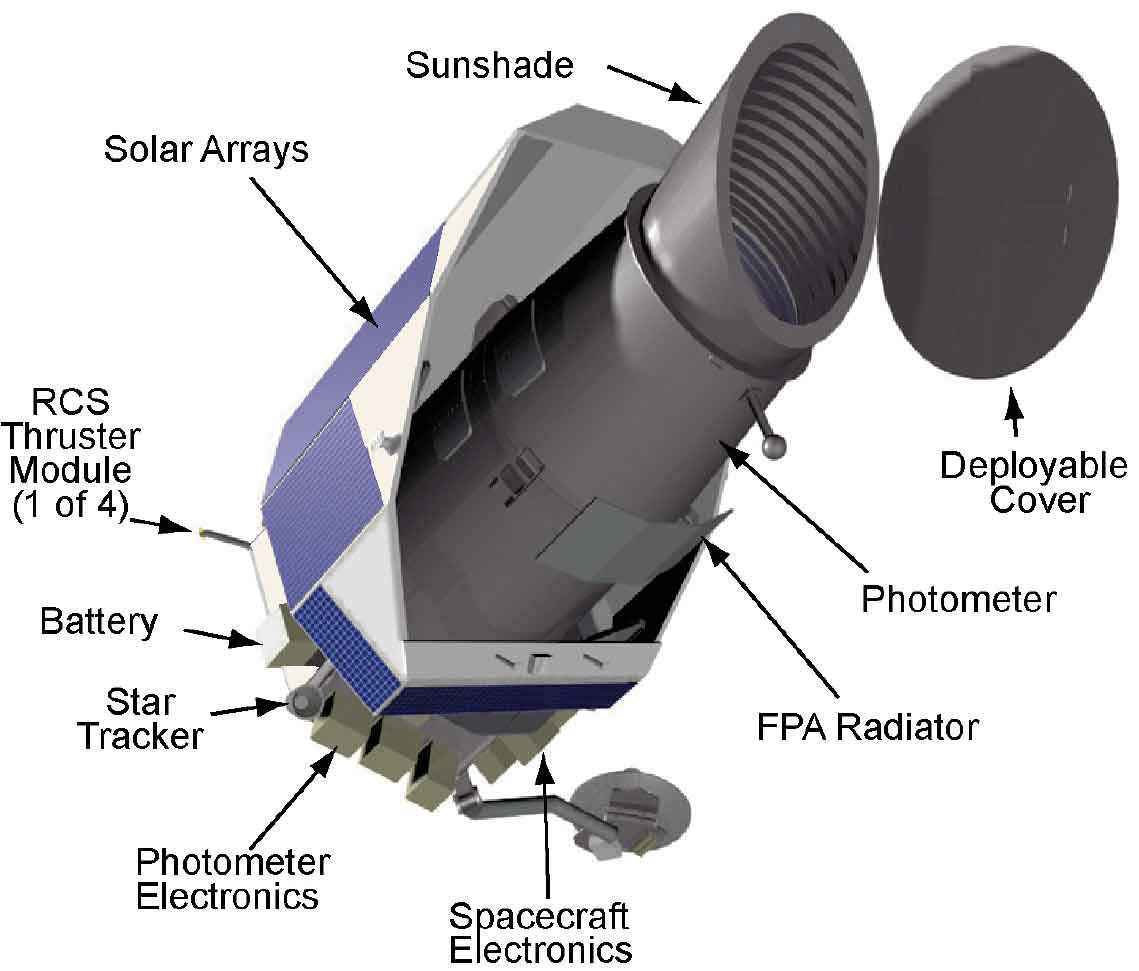In May of this year, the Kepler planet-hunting telescope lost its ability to precisely point toward stars, putting its exoplanet search in jeopardy. Two of the four reaction wheels failed, and Kepler scientists say the spacecraft needs at least three reaction wheels to be able to point precisely enough to continue the mission. In the latest update from Kepler, mission manager Roger Hunter says that the team has made a little headway and had initial success in testing the two failed reaction wheels. But the big test will come later to see how much friction the two wheels generate with continued use.
On Thursday, July 18, 2013 the team initiated recovery tests on the spacecraft’s two failed wheels in order to characterize how the two wheels (Reaction Wheels (RW) 4 and 2) operated and to determine if either could be returned to full use.
RW4 did not spin in the positive (or clockwise) direction but the wheel did spin in the negative (or counterclockwise) direction. Wheel 4 is thought to be the more seriously damaged of the two, Hunter said.
Then, on Monday, July 22 the team tested RW2, and that wheel responded positively to test commands and spun in both directions.
“Over the next two weeks, engineers will review the data from these tests and consider what steps to take next,” Hunter said. “Although both wheels have shown motion, the friction levels will be critical in future considerations. The details of the wheel friction are under analysis.”
Too much friction from the reaction wheels can cause vibration and impact the pointing precision of the telescope.
Kepler has found over 2,700 planetary candidates, with 130 confirmed planets, from the size of Earth’s moon to larger than Jupiter. There are two years of data that has yet to be combed through to detect the faint periodic dimming of distant starlight – the telltale sign of a planet transiting the face of its host star.
Still, the loss of Kepler would be a blow to the search for planets orbiting other stars. Earlier this year, Kepler team members said if the spacecraft could no longer do planet-hunting, there’s a chance it could do something else , such as asteroid hunting or other astronomical observations…just something that doesn’t need as precise ability for pointing.
Source: Kepler Mission Manager Update


That sounds good so far, no stuck reaction wheels.
The two year of pipeline data is comfort for a tiger heart. The issue is that the mission early on found that the Sun is a bit less varying in light output than the average star, meaning they had more noise than expected. (Since Kepler is also the first observatory looking at a large population of star light variations.)
So to have a reasonable chance to find an Earth analog, an Earth massed habitable around a Sun mass star, they have claimed the minimum time of 7 years observation. I assume the current data of half that period just achieves the minimum requirement (3 transits of a 1 year orbit planet).
That’s great news! Kudos to the Kepler scientists and engineers for their hard work and resourcefulness. Let’s hope that they can squeeze a little bit more planet-hunting science out of this beast.
As I understand it, though, RW2 was never thought to be stuck, instruments had merely indicated that it was running too hot, indicating excess friction that would likely lead to failure. It was shut down to prevent further damage. While its good to know it could be restarted, that doesn’t mean the problem of excess friction has been solved.
Good news, but I still worry.